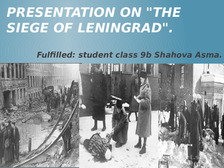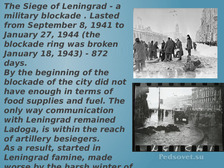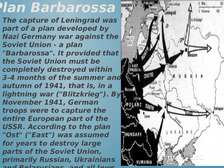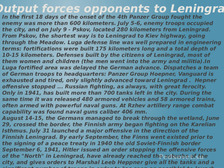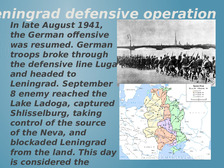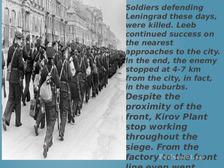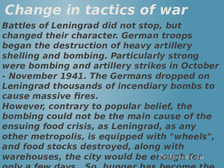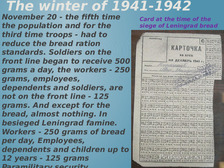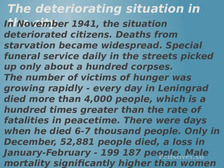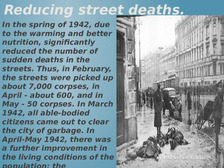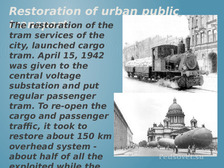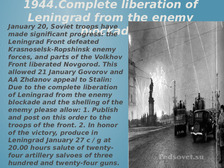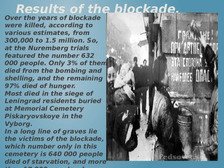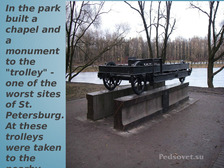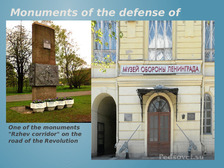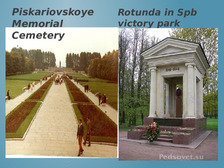Слайд 5
Output forces opponents to Leningra
In the first 18 days of the onset of the 4th Panzer Group fought the
enemy was more than 600 kilometers. July 5-6, enemy troops occupied
the city, and on July 9 - Pskov, located 280 kilometers from Leningrad.
From Pskov, the shortest way is to Leningrad to Kiev highway, going
through the Meadow. Luga defense line was well prepared in engineering
terms: fortifications were built 175 kilometers long and a total depth of
10-15 kilometers. Defenses built by the citizens of Leningrad, most of
them women and children (the men went into the army and militia).In
Luga fortified area was delayed the German advance. Dispatches a team
of German troops to headquarters: Panzer Group Hoepner, Vanguard is
exhausted and tired, only slightly advanced toward Leningrad . Hepner
offensive stopped ... Russian fighting, as always, with great ferocity.
Only in 1941, has built more than 700 tanks left in the city. During the
same time it was released 480 armored vehicles and 58 armored trains,
often armed with powerful naval guns. At Rzhev artillery range combat
capability was found naval guns caliber 406 mm.
August 14-15, the Germans managed to break through the wetland, June
29, crossed the border, the Finnish army began fighting on the Karelian
Isthmus. July 31 launched a major offensive in the direction of the
Finnish Leningrad. By early September, the Finns went existed prior to
the signing of a peace treaty in 1940 the old Soviet-Finnish border
September 6, 1941, Hitler issued an order stopping the offensive forces
of the "North" in Leningrad, have already reached the suburbs of the
city, and gives orders to Marshal Leeb Heppner give all the tanks and a
